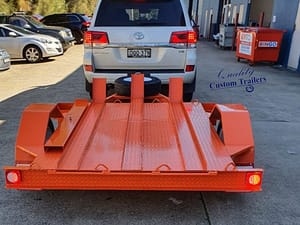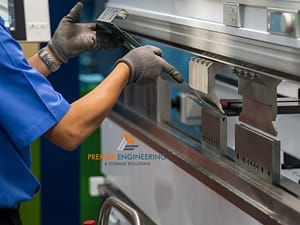Maintaining the body of a car is not just about aesthetics; it plays a crucial role in the vehicle’s overall integrity and value. The bodywork protects the car from environmental elements and impacts. Regular maintenance and timely repairs can prevent rust, extend the vehicle’s lifespan, and maintain its resale value. It’s also important for safety, as some body damages can compromise the vehicle’s structural integrity.
Overview of Repair and Restoration Services
Car body repair and restoration services can range from minor cosmetic fixes to complete overhauls. Standard repairs typically involve fixing dents, scratches, and minor damages that occur through everyday use or minor accidents. Restoration, on the other hand, is a more extensive process, often involving vintage or classic cars, where the goal is to return the vehicle to its original condition, preserving or increasing its value and appeal.
Types of Car Body Repair Services
Minor Repairs
Minor repairs are the most common type of bodywork. This includes fixing small dents, where paintless dent removal techniques can be used, repairing minor scratches, or addressing paint chips. These repairs are typically quick and cost-effective, ensuring that minor damages don’t develop into more significant issues like rust or paint flaking.
Major Body Repairs
Major body repairs come into play with significant damage, often as a result of collisions or severe accidents. This may involve panel beating, where damaged panels are reshaped or replaced, repainting larger areas, and ensuring that the car’s structural integrity is not compromised. These repairs are more complex and require a higher level of expertise to ensure that the vehicle is safe to drive post-repair.
Restoration Services for Classic and Vintage Cars
Restoration Process Explained
Restoring a classic or vintage car is a meticulous process that often involves a complete teardown and rebuild. The restoration process includes repairing or replacing body panels, matching the original paint color, and often refurbishing or rebuilding the engine and other mechanical components. The goal is to bring the vehicle back to its original state, or as close to it as possible.
Challenges and Considerations
Restoring vintage vehicles presents unique challenges. Finding authentic parts, matching original paint colors, and preserving the historical integrity of the car are crucial aspects. Restorations require a deep understanding of the vehicle’s history and often demand a lot of time and resources. Each car is unique, and so are its restoration needs – a fact that must be considered when embarking on such a project.
Choosing the Right Service for Your Car
Assessing Your Car’s Needs
Determining the level of repair or restoration your car requires is the first step in the process. For minor dents and scratches, a standard body repair shop should suffice. However, if your vehicle has suffered significant damage or if it’s a classic car requiring restoration, you’ll need a service specializing in such work. Assess the extent of the damage and consider the car’s age, model, and historical value before deciding on the type of service needed.
Selecting a Reputable Service Provider
Finding a trustworthy and skilled body repair or restoration shop is crucial. Look for services with positive reviews and recommendations, especially from clients with similar car models or restoration needs. Check for certifications and qualifications of the technicians. A reputable service provider should be transparent about their process, provide a clear estimate, and have a track record of quality work.
Techniques and Materials in Car Body Work
Modern Techniques in Body Repair
Contemporary car body repair utilizes a range of advanced techniques. This includes paintless dent removal for minor dents, computerized color matching systems for paint jobs, and high-tech welding for structural repairs. The use of modern equipment and techniques allows for more precise and less invasive repairs, ensuring a finish that closely matches the original state.
Materials Used in Restoration
Classic car restoration involves a mix of traditional craftsmanship and modern materials. Original or authentically reproduced body panels, period-accurate paints, and traditional upholstery materials are often used. The choice of materials is crucial in preserving or recreating the car’s original look and feel, and in some cases, may require sourcing rare or out-of-production components.
Cost and Time Considerations
Estimating Repair and Restoration Costs
The cost of car bodywork can vary widely based on the extent of the damage, the type of car, and the level of craftsmanship required. For standard repairs, costs might be more predictable, but restoration projects, especially for classic cars, can be significantly higher due to the labor-intensive nature of the work and the cost of authentic materials. Always get a detailed estimate that breaks down labor and material costs.
Timeline for Repair and Restoration Projects
The time required for car body repairs can range from a few hours for minor fixes to several months or even years for full restorations of classic cars. The timeline depends on the complexity of the work, the availability of parts, and the workload of the service provider. It’s important to discuss timelines upfront and have realistic expectations, especially for restoration projects where delays can be common.
Maintaining Your Car Post-Repair or Restoration
Caring for Your Car’s Body Post-Repair
After your car has undergone body repair, maintaining its appearance and integrity is crucial. Regular washing and occasional waxing can protect the paint and finish. Be mindful of using gentle cleaning products that won’t harm the paintwork. For minor scratches, touch-up paint can be used, but ensure it matches the car’s original color. Additionally, parking in shaded areas or using a car cover can protect the body from sun damage and weather elements.
Long-term Preservation of Restored Vehicles
Maintaining a restored classic car requires a more meticulous approach. Store the vehicle in a climate-controlled environment to protect it from temperature and humidity fluctuations, which can damage the paint and bodywork. Regularly start the engine and consider taking it for a short drive periodically to keep the mechanical parts in working order. It’s also advisable to keep a detailed record of all restoration work and maintenance for future reference and valuation.
Conclusion
Regular maintenance is key to prolonging the life and appearance of your vehicle, especially after repair or restoration work. Engaging in routine care and addressing issues promptly can prevent minor damages from escalating into major problems. For owners of classic cars, professional restoration can breathe new life into vintage vehicles, preserving their heritage and value. Ultimately, investing in quality car body services is an investment in the longevity and enjoyment of your vehicle.







